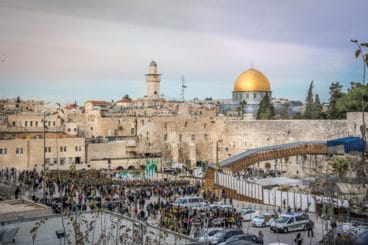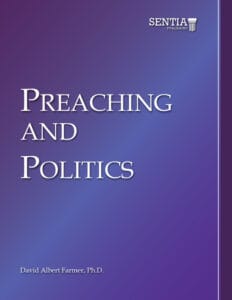 I loved my moments at the various holy sites like the Church of the Nativity, Sea of Galilee, Garden of Gethsemane, and the Via Dolorosa. All of these places are sacred to my faith and I treasure their memories. But God didn’t really speak to me in any of these beautiful places.
I loved my moments at the various holy sites like the Church of the Nativity, Sea of Galilee, Garden of Gethsemane, and the Via Dolorosa. All of these places are sacred to my faith and I treasure their memories. But God didn’t really speak to me in any of these beautiful places.
I can relate to the prophet Elijah, when he stood in the wilderness waiting for God. The story, found in 1 Kings 19:1-18, tells of the unusual way that God met him. Having just helped Elijah defeat Queen Jezebel’s spiritual team in a “made for TV showdown,” we would expect God to again communicate in another dramatic way.
God sent powerful winds, a ground-trembling earthquake, and a roaring fire that all got Elijah’s attention. But He was not in any of these. It was actually in a final, gentle whisper that the Lord spoke.
My first trip to the Holy Land was a little like this. I was on the typical pilgrimage with my church. I was so excited to “walk in the footsteps of Jesus” and actually see all the places I had always read about in the Bible. And like Elijah, I too, was praying that God would reveal Himself to me. I loved my moments at the various holy sites like the Church of the Nativity, Sea of Galilee, Garden of Gethsemane, and the Via Dolorosa. All of these places are sacred to my faith and I treasure their memories. But God didn’t really speak to me in any of these beautiful places.
I felt God most powerfully the in ugly places where I wasn’t even expecting to go. These were not spots highlighted in the travel brochure or scheduled on our itinerary. It was actually along the way to the holy sites that I found the Holy One. It was there that I had my holy juxtaposition.
I felt God most powerfully the in ugly places where I wasn’t even expecting to go.
I felt God in the shadows of the looming wall that divides Bethlehem from Jerusalem. I saw him standing in the crowded checkpoints where people are lined up like cattle. And I heard his voice through the people I met, as they described how the occupation affects their daily lives—an occupation that marks its 52nd year. I found Jesus in all of these dark places, because this is where He broke my heart.
I came home from my trip deeply moved. Until that time, I was a faithful Christian, but so very uninformed on these issues. I did not understand the realities of life in Israel and Palestine. I didn’t know that there was another side to the story that I wasn’t hearing on the nightly news. I didn’t realize that my own government played a huge role in many of the injustices I witnessed. And, unfortunately, I think far too many good Christians are guilty of the same thing.
I came home from that trip vowing to share all parts of my trip and all of my holy juxtaposition. I want my beloved Christian community to understand that the Holy Land is not a museum or a biblical theme park. It’s a real place that is full of so much beauty and so much ugliness. I want them to understand that there is great hurt and injustice happening in the sacred place of Jesus’ life and ministry. And, I want them to understand that we can’t claim to be Jesus’ followers without following His example to love all the people who live there.
Churches for Middle East Peace (CMEP) is helping me to put my faith into action. CMEP is an organization that I support because it is targeted at the Christian community, particularly in the United States. They do not call for Christians to take sides, but they do call for us to stand for peace and justice.
I am proud to serve as a regional coordinator and volunteer staff member for CMEP. This role gives me opportunities to keep up with the latest issues happening and pass that information on to my local community. My church has also hosted a Pilgrimage to Peace (P2P) tour so that our members could hear both Israeli and Palestinian perspectives first hand. And, most importantly, it is through CMEP’s annual summits that I have raised my voice with people in power in our government. With CMEP’s help I have visited my representatives in Congress and in the Senate to advocate for positive changes in policies that promote true peace for Israel and Palestine.
Peace in the Middle East does not have to be as lofty as it seems. It just takes a willingness for people to open their eyes and hearts to the realities of life in the region and then speak out about the injustices they see. I am thankful that CMEP helps Christians like me to do that.
Dear Heavenly Father,
We pray to feel your presence in new ways. Open our eyes to the pain and suffering in the world around us. Help us to see where we might even be part of the problem and help us to repent. Break our hearts for what breaks Yours. And then lead us by the power of the Holy Spirit to put our faith into action so that we might faithfully follow your call to love all people.
In Jesus name we pray,
Amen.
This article first appeared on Churches for Middle East Peace, and is reprinted here with permission.


